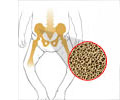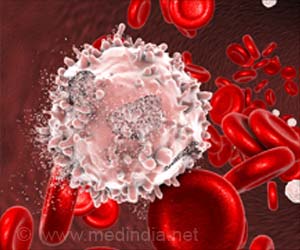We all know that iron deficiencies are dangerous, but also too much iron is bad for our health. Our body stores excess iron in various tissues, where it can lead to organ failure and…
We all know that iron deficiencies are dangerous, but also too much iron is bad for our health. Our body stores excess iron in various tissues, where it can lead to organ failure and even death if not treated before irreversible damage has occurred.
Researchers from the Innsbruck Medical University, the University of Heidelberg, Germany, and the European Molecular Biology Laboratory [EMBL] now made a surprising discovery that may lead to new therapeutic approaches to treating such disorders. In this week's online issue of the journal Nature Medicine they report that a compound that was frequently used to treat high blood pressure can reverse iron overload in mouse models and has the potential to treat similar conditions in humans.Our body needs most of its iron to make red blood cells. A lack of the metal can lead to dangerous anemias, but also too much iron can be detrimental as iron promotes the formation of toxic radicals leading to tissue damage. Iron overload is the consequence of one of the most common genetic disorders in Europe, hereditary hemochromatosis, which affects about one in 300 Europeans. Excess iron also accumulates after repeated blood transfusions and can cause organ failure over time. Günter Weiss, a clinician from the Innsbruck Medical University, and his collaborators from the University of Heidelberg and EMBL now found out that nifedipine, a substance commonly used to control blood pressure, helps the body deal with too much iron.
"We observed in mice with iron overload that nifedipine helps mobilise iron from stores in the liver and enhances its excretion into the urine," says Weiss, an EMBL alumnus who now heads a lab at the Department for General Internal Medicine at the University of Innsbruck. "These effects make nifedipine a promising candidate for a new drug to treat hereditary hemochromatosis and other iron overload disorders."
Combining electrophysiology, cell biology and molecular investigations, Weiss and his collaborators found out that nifedipine exerts its effect on iron metabolism by acting on a molecule called DMT-1. DMT-1 transports iron across cell membranes. This transport is increased ten to 100-fold by nifedipine, but how exactly the compound brings about its effect is still unknown. Nifedipine is known to block membrane channels that control Ca2+ influx into cells, but if it exerts its effect on iron transport indirectly by changing Ca2+ levels in the cell or by binding directly to DMT-1 in liver and kidney still needs to be determined.
"Understanding the exact molecular mechanism underlying nifedipine's effect on iron transport would be a big step towards developing it into an effective therapy that can be used on patients," says Martina Muckenthaler, an EMBL alumna who is now at the University of Heidelberg. "Taking nifedipine from bench to bedside could be quicker than for other substances, because it has already been used for years to treat patients with high blood pressure. From this we know the drug and its sideeffects."
An important step on the way from laboratory to clinic will be targeted pharmacological modifications of the compound to separate nifedipine's effect on iron metabolism from its established action on blood pressure.
Advertisement
Source-Bio-Bio Technology
SRM











